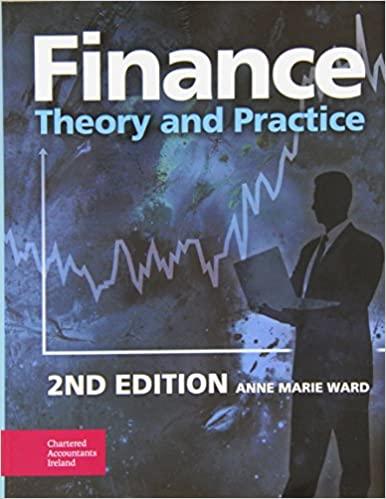Question
Case Study Neile looked at his mechanic and sighed. The mechanic had just pronounced a death sentence on his road-weary car. The car had served
Case Study Neile looked at his mechanic and sighed. The mechanic had just pronounced a death sentence on his road-weary car. The car had served him well---at a cost of $500 it had lasted through four years of college with minimal repairs. Now, he desperately needs wheels. He has just graduated, and has a good job at a decent starting salary. He hopes to purchase his first new car. The car dealer seems very optimistic about his ability to afford the car payments, another first for him. The car Neile is considering is $35,000. The dealer has given him three payment options:
1. Zero percent financing. Make a $4000 down payment from his savings and finance the remainder with a 0% APR loan for 48 months. Neile has more than enough cash for the down payment, thanks to generous graduation gifs.
2. Rebate with no money down. Receive a $4000 rebate, which he would use for the down payment (and leave his savings intact), and finance the rest with a standard 48-month loan, with an 8% APR. He likes this option, as he could think of many other uses for the $4000.
3. Pay cash. Get the $4000 rebate and pay the rest with cash. While Neile doesnt have $35,000, he wants to evaluate this option. His parents always paid cash when they bought a family car; Neile wonders if this really was a good idea.
Neiles fellow graduate, Henna, was lucky. Her parents gave her a car for graduation. Okay, it was a little Hyundai, and definitely not her dream car, but it was serviceable, and Henna didnt have to worry about buying a new car. In fact, she has been trying to decide how much of her new salary she could save. Neile knows that with a hefty car payment, saving for retirement would be very low on his priority list. Henna believes she could easily set aside $3000 of her $45,000 salary. She is considering putting her savings in a stock fund. She just turned 22 and has a long way to go until retirement at age 65, and she considers this risk level reasonable. The fund she is looking at has earned an average of 9% over the past 15 years and could be expected to continue earning this amount, on average. While she has no current retirement savings, five years ago Hennas grandparents gave her a new 30-year U.S. Treasury bond with a $10,000 face value. Henna wants to know her retirement income if she both (1) sells her Treasury bond at its current market value and invests the proceeds in the stock fund and (2) saves an additional $3000 at the end of each year in the stock fund from now until she turns 65. Once she retires, Henna wants those savings to last for 25 years until she is 90. Both Neile and Henna need to determine their best option.
Required Q.1: What are the cash flows associated with each of Neiles three care financing options?
Q.2: Suppose that, similar to his parents, Neile had plenty of cash in the bank so that he could easily afford to pay cash for the car without running into deb now or in the foreseeable future. If his cash earns interest at a 5.4% APR (based on monthly compounding) at the bank, what would be his best purchase option for the car?
Q.3: Suppose Hennas Treasury bond has a coupon interest rate of 6.5%, paid semiannually, while current Treasury bonds with the same maturity date have a yield to maturity of 5.4435% (expressed as an APR with semiannual compounding). If she has just received the bonds 10th coupon, for how much can Henna sell her treasury bond?
Q.4: Suppose Henna sells the bond, reinvests the proceeds, and then saves as she planned. If, indeed, Henna earns a 9% annual return on her savings, how much could she withdraw each year in retirement? (Assume she begins withdrawing the money from the account in equal amounts at the end of each year once her retirement begins.)
Q.5: Henna expects her salary to grow regularly. While there are no guarantees, she believes an increase of 4% a year is reasonable. She plans to save $3000 the first year, and then increase the amount she saves by 4% each year as her salary grows. Unfortunately, prices will also grow due to inflation. Suppose Henna assumes there will be 3% inflation every year. In retirement, she will need to increase her withdrawals each year to keep up with inflation. In this case, how much can she withdraw at the end of the first year of her retirement? What amount does this correspond to in todays dollars? (Hint: Build a spreadsheet in which you track the amount in her retirement account each year) Q.6: Should Henna sell her Treasury bond and invest the proceeds in the stock fund? Give at least one reason for and against this plan.
Step by Step Solution
There are 3 Steps involved in it
Step: 1

Get Instant Access to Expert-Tailored Solutions
See step-by-step solutions with expert insights and AI powered tools for academic success
Step: 2

Step: 3

Ace Your Homework with AI
Get the answers you need in no time with our AI-driven, step-by-step assistance
Get Started


